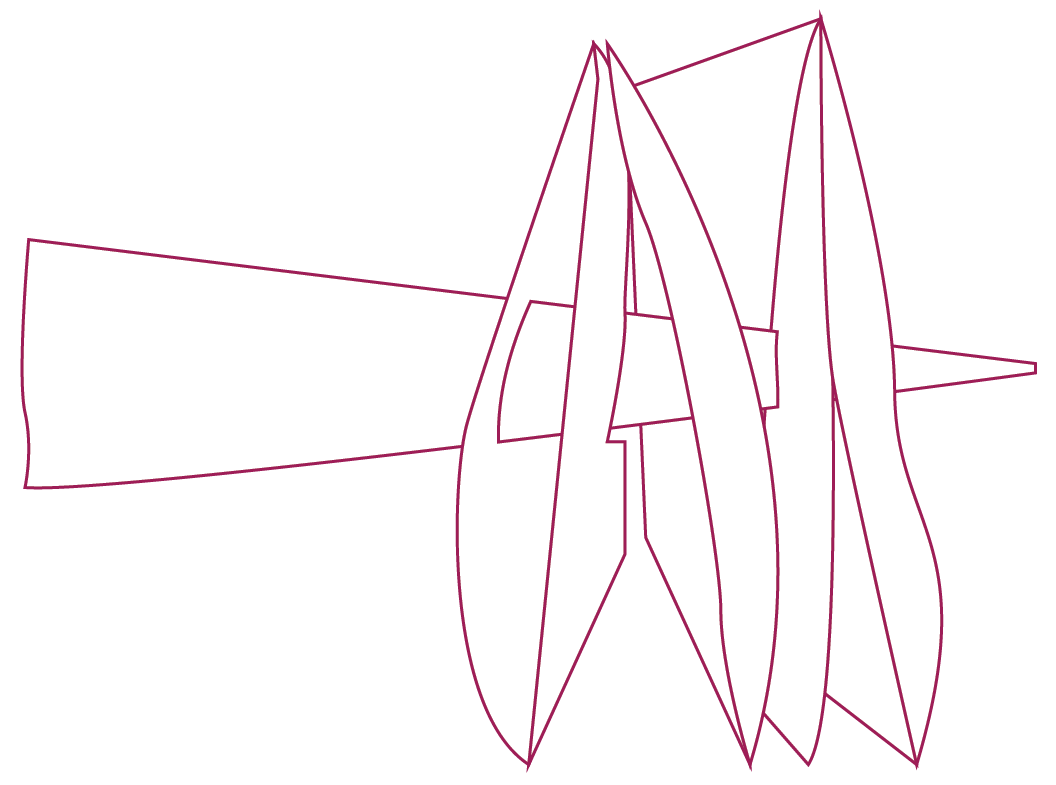Exhibition Room 4
Black Chamber
Some information was too precious to fall into the wrong hands. What were letter-writers keeping secret? And how did they protect them against prying eyes?
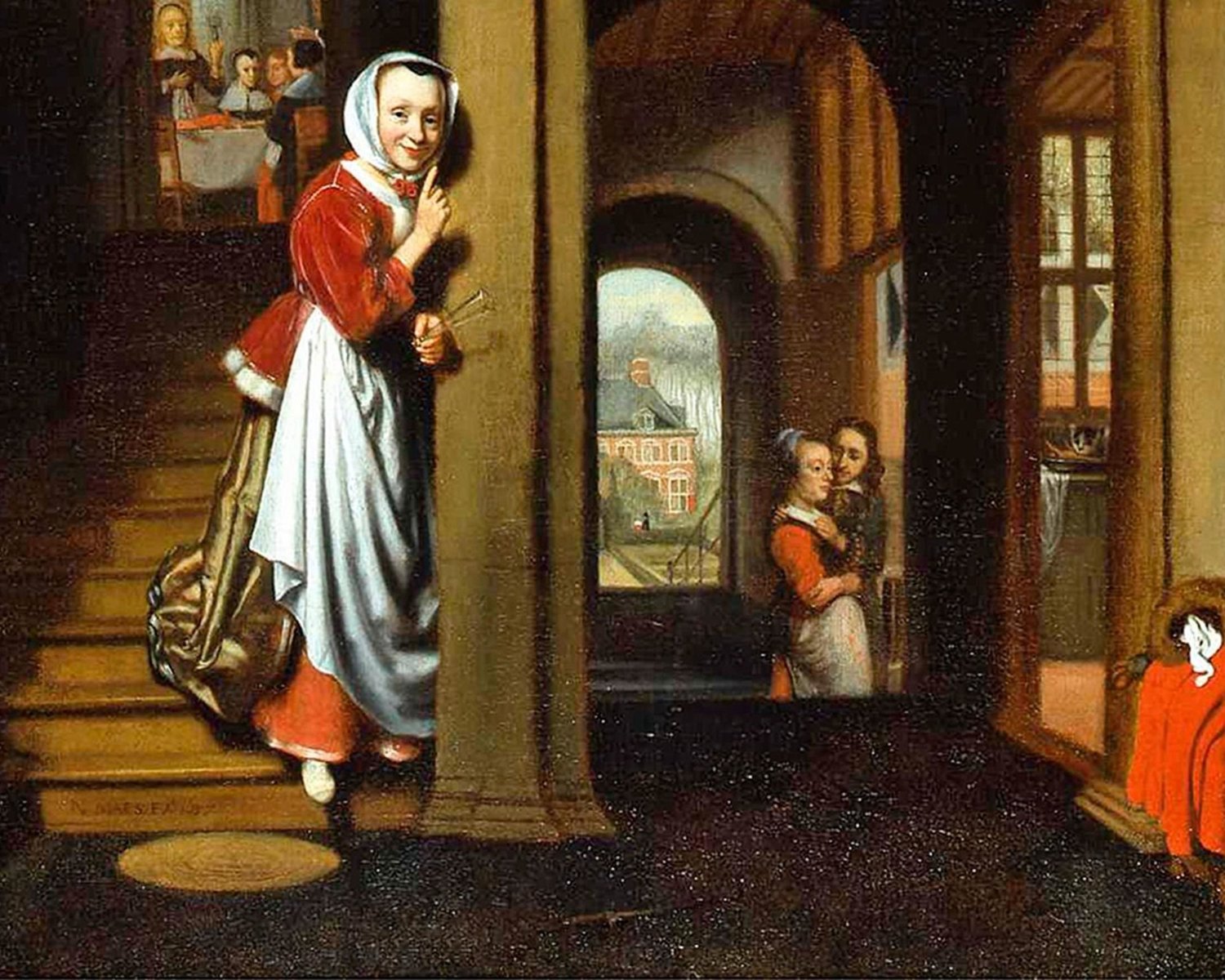
Detail of Nicolaes Maes, The Eavesdropper, c. 1655. Dordrechts Museum, Dordrecht.
Black Chamber
Black Chambers were the hidden quarters of the daily post office, where polymaths and scribes extracted information from letters in a bold but systematic manner: they opened, copied and, swiftly resealed letters.
Knowing that the French authorities were watching, letter-writers devised different ways to circumvent inspection.
Read here about the hiding of letters, the locking formats with levels of security, and the art of writing in code…
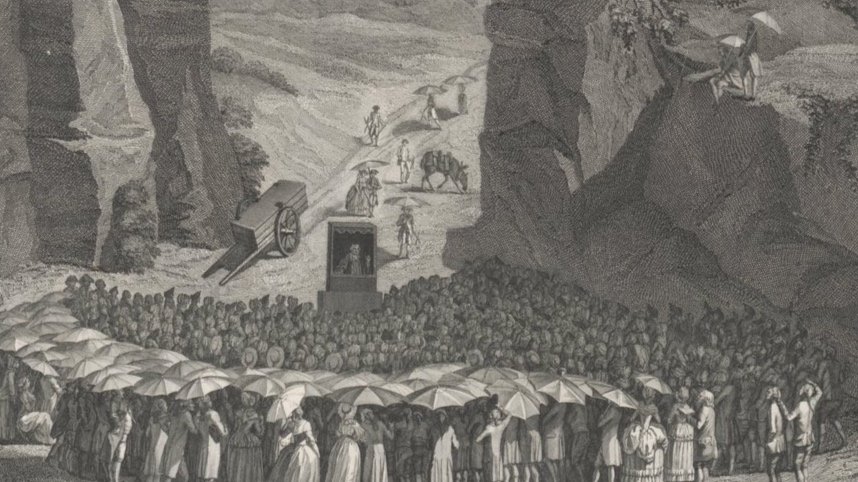
The hidden letter
From Huguenot preacher to mister Folcher ...?
A Huguenot preacher, exiled from France, secretly travelled back to France to preach the Protestant faith. To prevent his letters home from being caught, he sent a letter-wrapper to a merchant in The Hague, monsieur Folcher:

DB-0367 Address panel
Reading the address panel, spymasters in the Black Chamber might not think much of it. Yet the inside contained instructions to forward an enclosed letter:
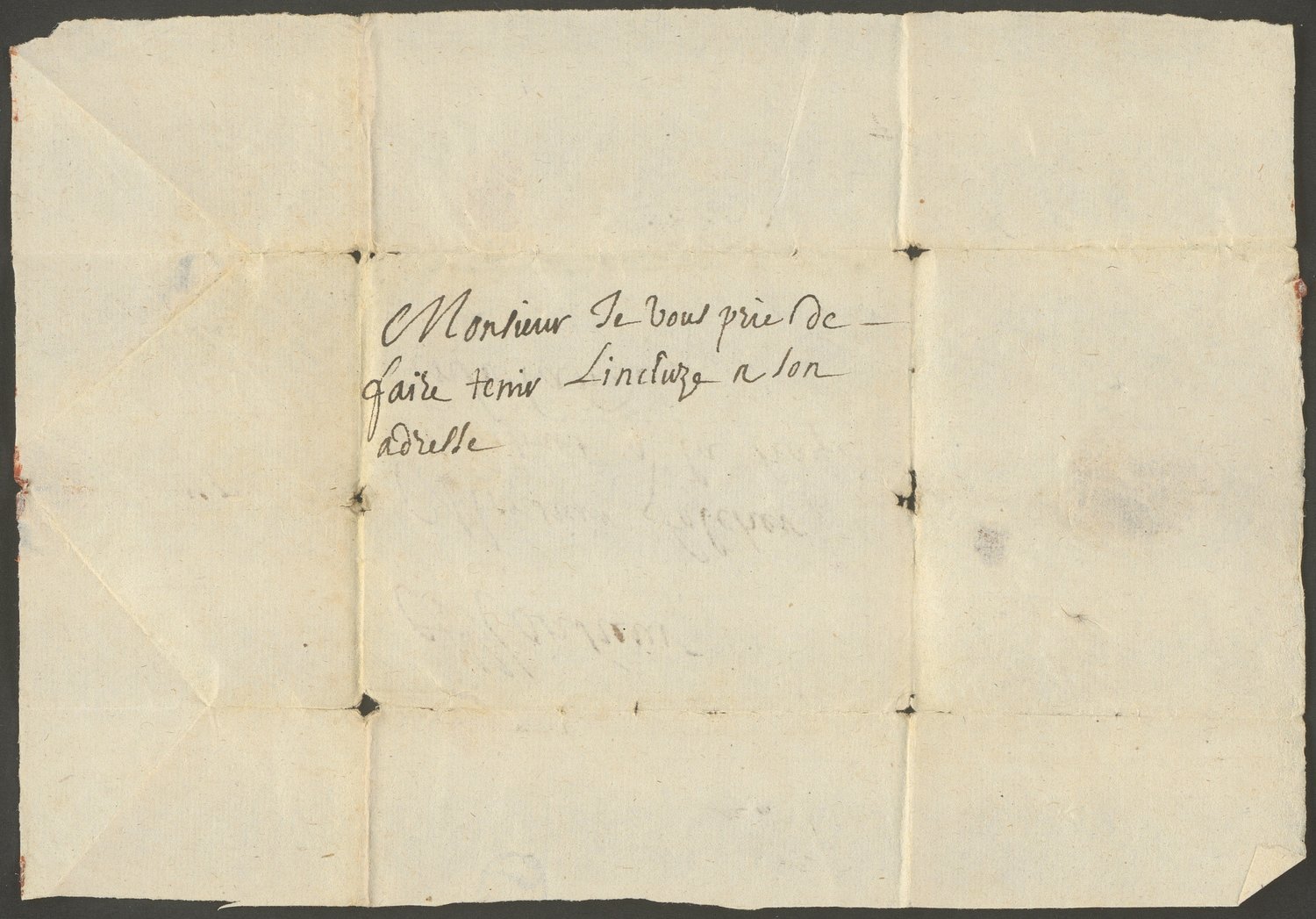
DB-0367: the inside shows the name of the actual recipient
The letter-wrapper turned out to be a decoy, as inside the letter to Folcher was a hidden letter addressed to monsieur Du Viviers, a Huguenot minister in The Hague:
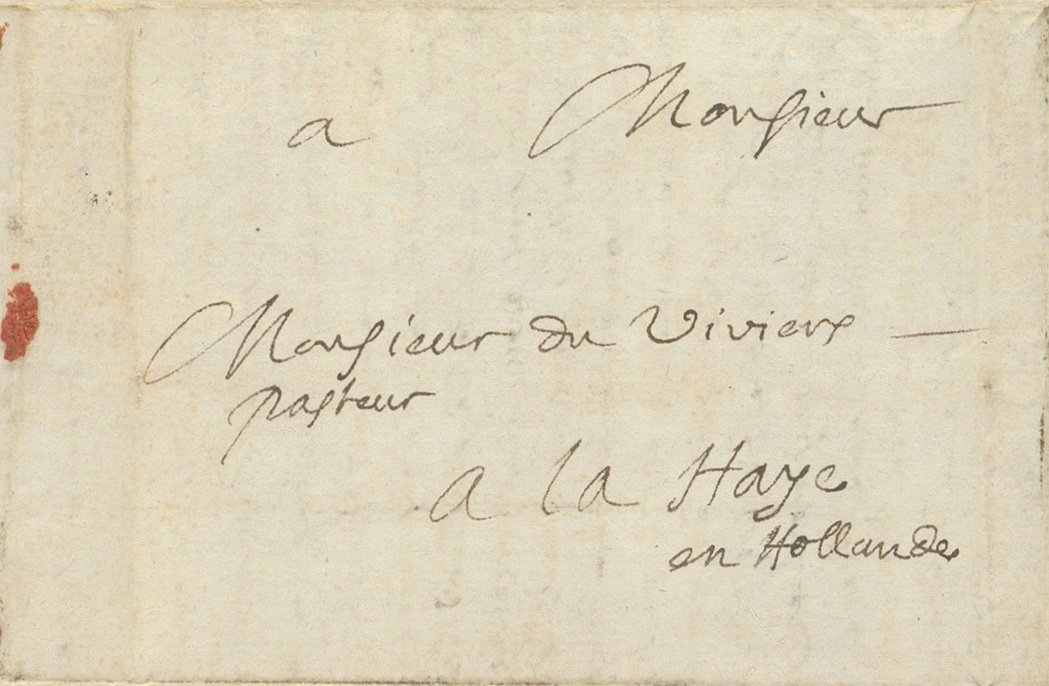
DB-0367: Hidden letter to Monsieur du Viviers, pastor in The Hague.
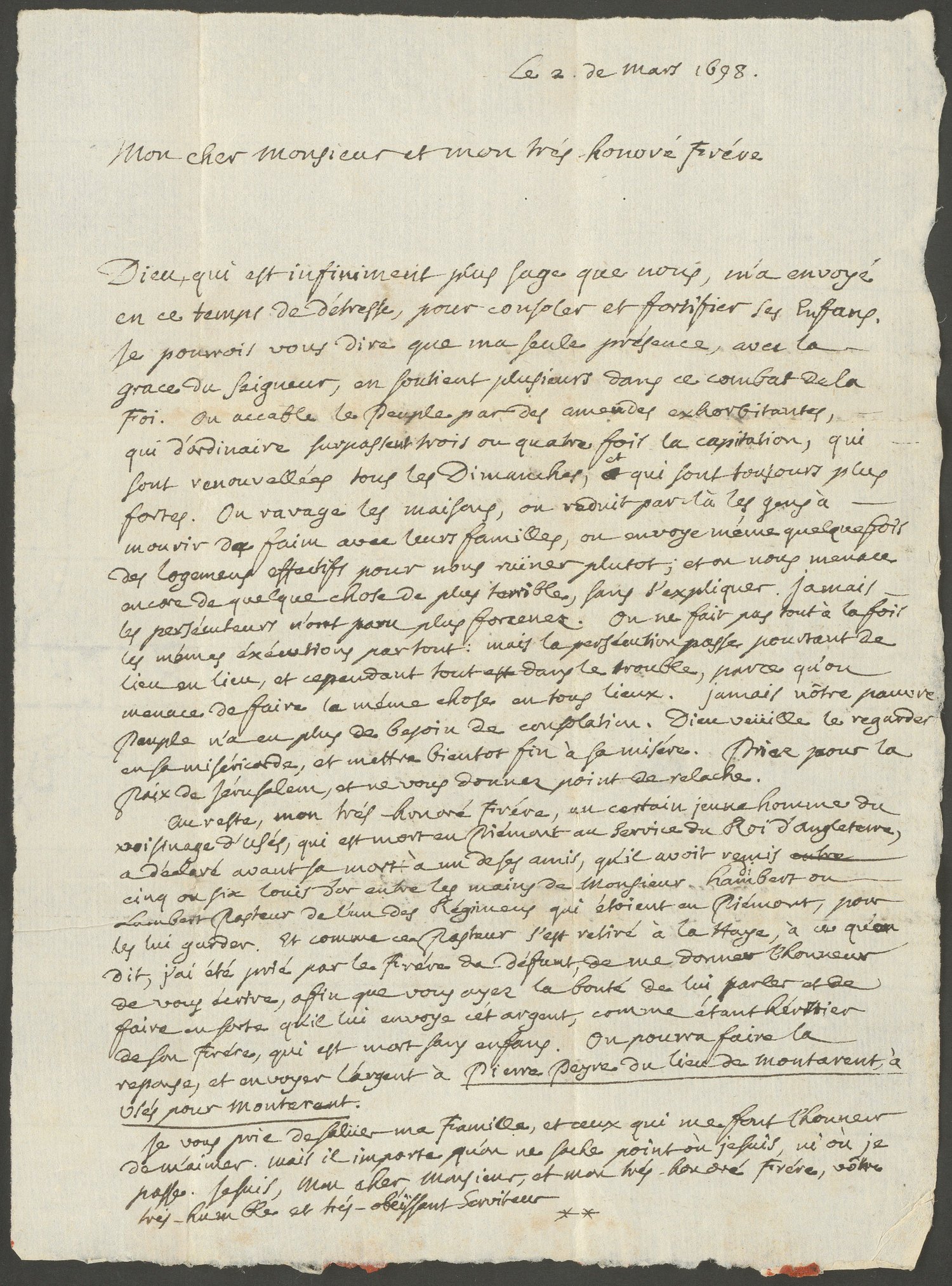
DB-0367, Sound and Vision, The Hague.
Yet this particular method to circumvent the Black Chamber was not without it drawbacks. For merchant Folcher was absent, and hence could not forward the letter.
![[Jean Barrin], Venus dans le cloitre ou La religieuse en chemise, Cologne: Jacques Durand, 1683. The Bavarian State Library, Munich.](https://images.squarespace-cdn.com/content/v1/55ac3d89e4b07d0961f93c14/1699749219149-JK7KUYFONSN304JNF5HQ/religieuze-chemise.jpg)
[Jean Barrin], Venus dans le cloitre ou La religieuse en chemise, Cologne: Jacques Durand, 1683. The Bavarian State Library, Munich.
The naughty letter
From Calabre to Étienne Fouque, Bergues, 18 November 1701
The author of this letter, bookseller Calabre, normally ordered his books through a friend, but he himself had been ill. He therefore writes directly to bookseller Étienne Foulque in The Hague.

DB-1013, Address panel
Could you please provide me with the books on the attached list, the writer asks, “avec d'autres jolly et nouveau” (with other jolly and new books)?
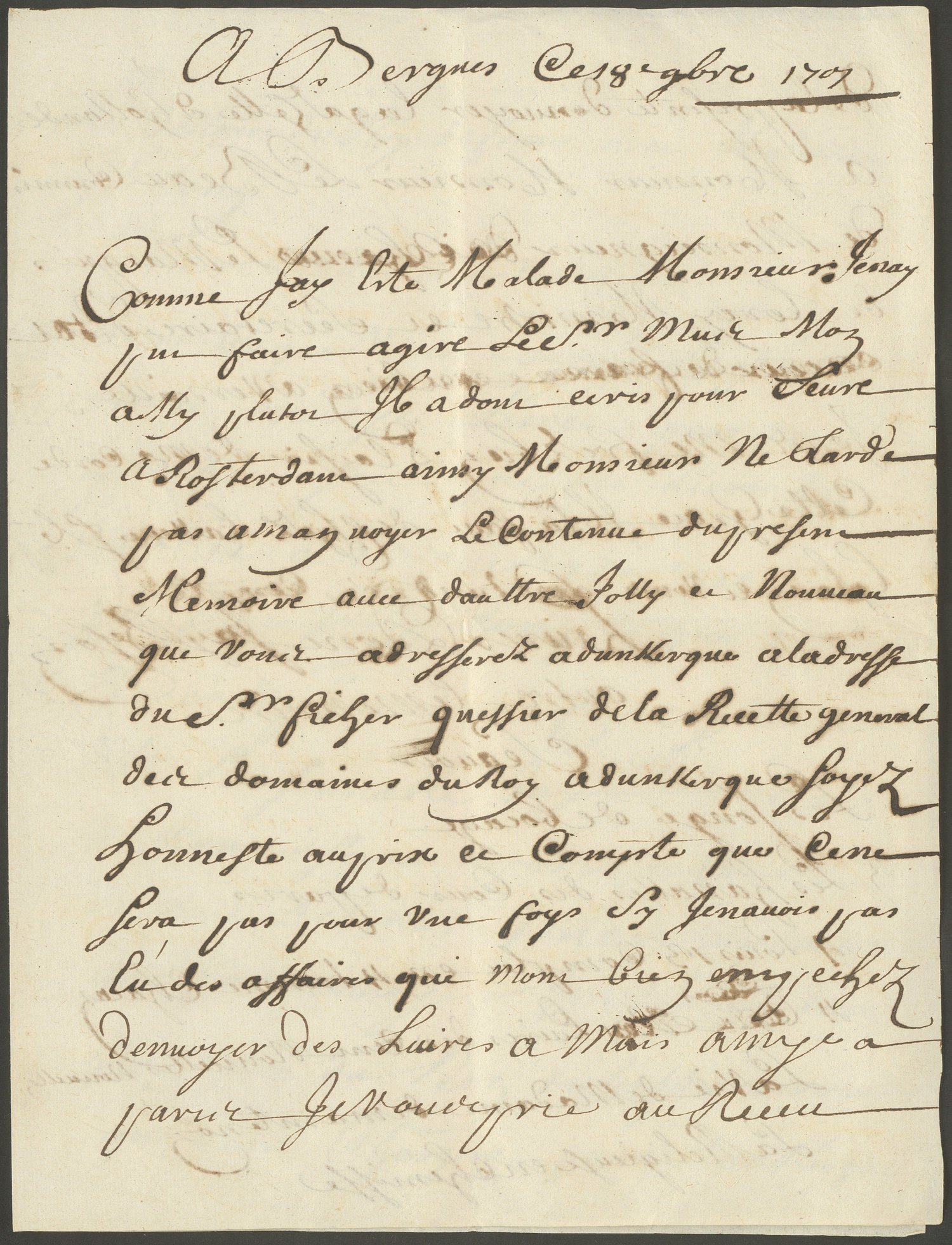
DB-1013, Sound and Vision. The Hague.
Then followed a long list of books, including a couple of pornographic titles:
Le songe de Bocace
3 Les analles du cour de Paris
4 Louis 13 complet en 4 tomes chacun
4 livres des cent nouvelles nouvelles
La vie de Madame de Maintenon
La religieuse en chemise
Les amours du Roy de France avec Madame St. Trong
La vie de Madame de la Vallier
These books were forbidden in France, but secretly imported from the Dutch Republic and then sold under the counter.
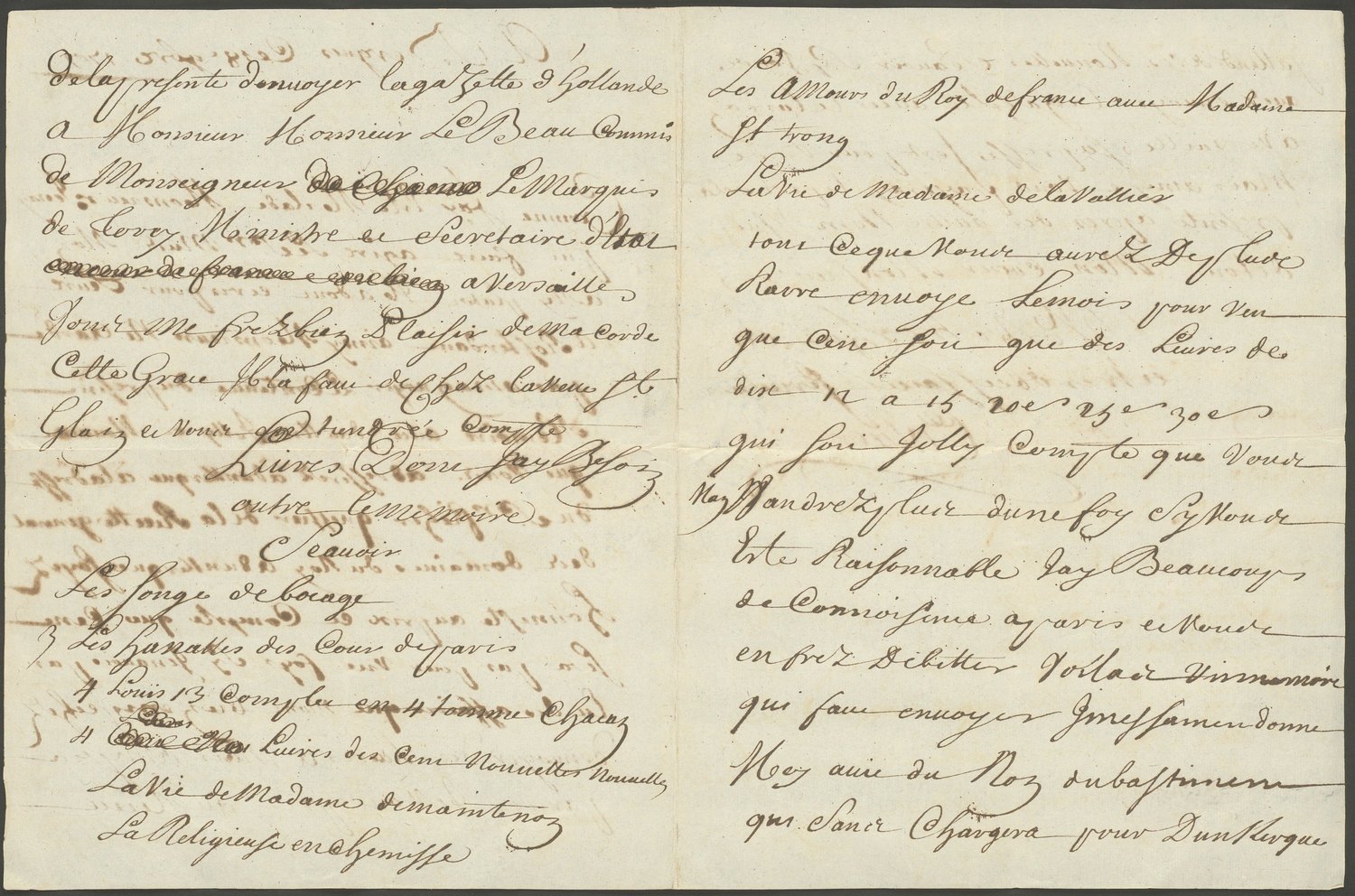
DB-1013, Sound and Vision, The Hague.
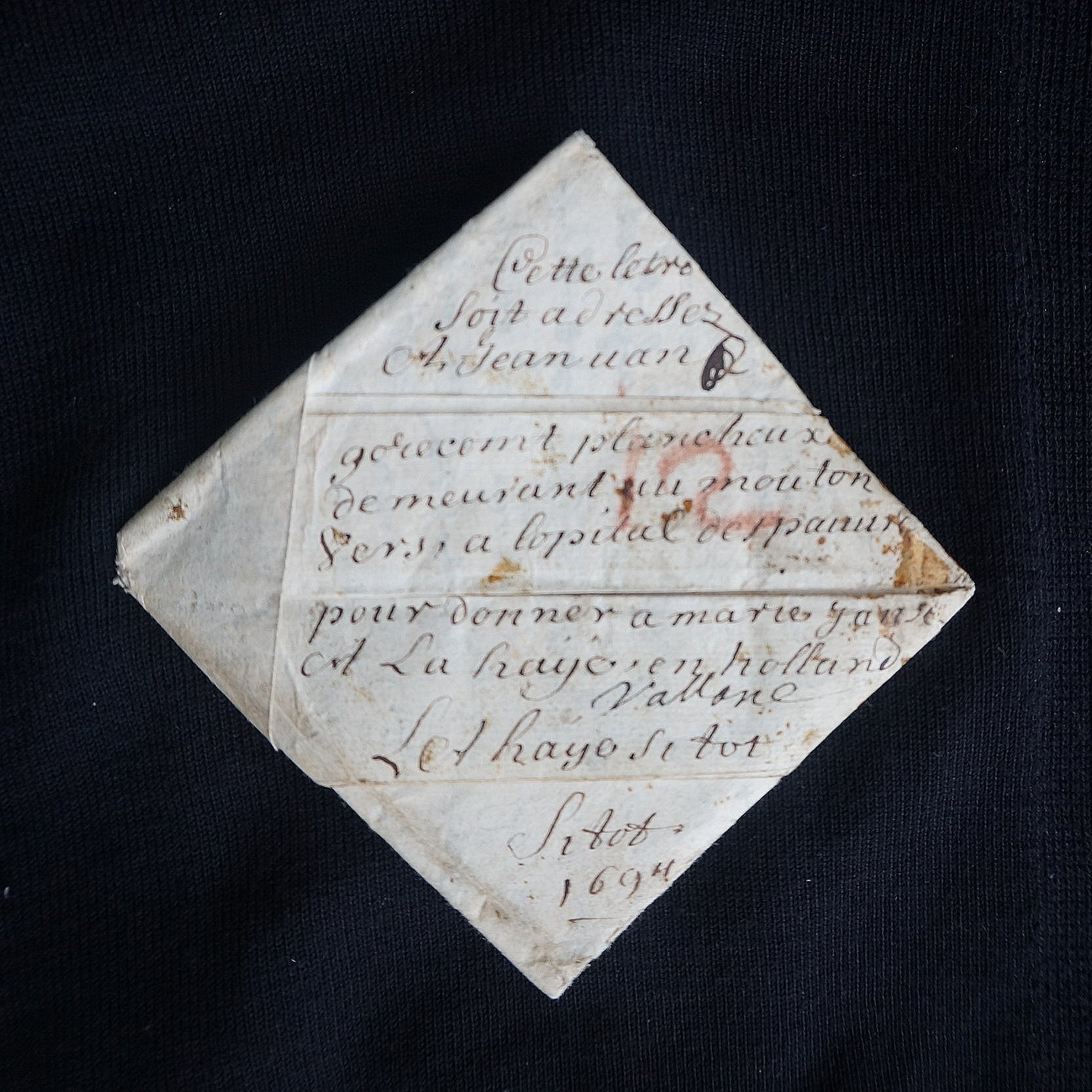
DB-1876. UH0047.
The locked letter
Early modern letter writers developed intricate ways of letterlocking. Some methods were simple, others more complicated, and hence, more secure.The Brienne chest stores all kinds of letterlocking formats, revealing three levels of security.
LC2Z: Fold + Tuck (zero security score)This a letter from Cornelis van Steijn to Katelijncken van Steijn, 1 September 1696.
(Click the video to see how the letter was locked)
The paper for this letter was torn out of a book. The sewing holes can be seen at the gutter edge. The letter is C-folded twice, followed by one open-edged panel tucking into the other to close the letter-packet.DB-1884.
LC6L: Fold + Tuck + Adhere (low security scoreAn anonymous author sent this letter to Mr. Suijthof in The Hague.
(Click the video to see how the letter was locked)
The author took the time to fold his letter into a complicated diamond-shaped letter-packet and secured it by folding, tucking, and sealing.DB-0833.LC15 L: Fold + Slit + Lock + Adhere (low security score)This letter is a six-panel pleated letter.
(Click the video to see how the letter was locked)
The lock, cut from a repurposed manuscript waste, is folded in half and cut so when it's opened, flat, it has three peaks. The tapered tip of the lock is rolled and laced through a single slit made through all the panels of the folded letter. The wider end of the paper lock wraps around the fore-edges of the letter-packet over the tapered tip of the lock now laced through the packet. An adhesive, probably a starch-based wafer, was placed between the packet and lock and a metal stamp was impressed into the adhesive through the paper lock creating a papered seal.DB-1465.
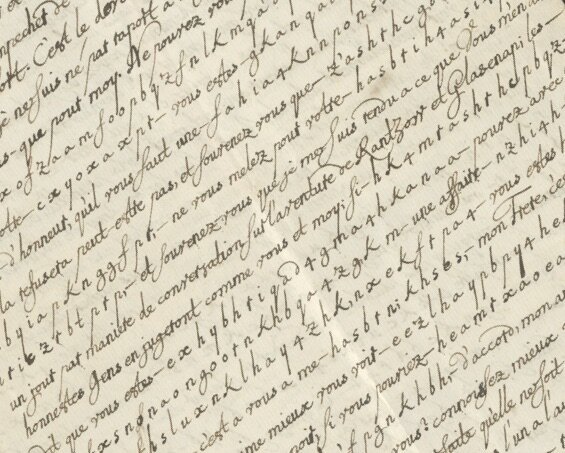
The coded letter
Early modern spies used cipher codes to encrypt their secret messages…
Coded letter from X to Z
People used secret codes and ciphers – a writing technique called cryptography – in order to protect their private communications from Black Chambers officers or other prying eyes.
The most simple code is substitution alphabets (letter a equals c, d, or e; letter b equals f, g or h etc.). This method often sufficed to protect information from casual interceptors as they needed a bunch of letters written in the same cipher code rather than a single letter, as well as some knowledge of the context, in order to start decoding.
Other codes were consisted of hieroglyphics or numbers.
This letter is a coded letter in the Brienne collection.
Can you decipher it?

DB-XOXO, Sound and Vision, The Hague.
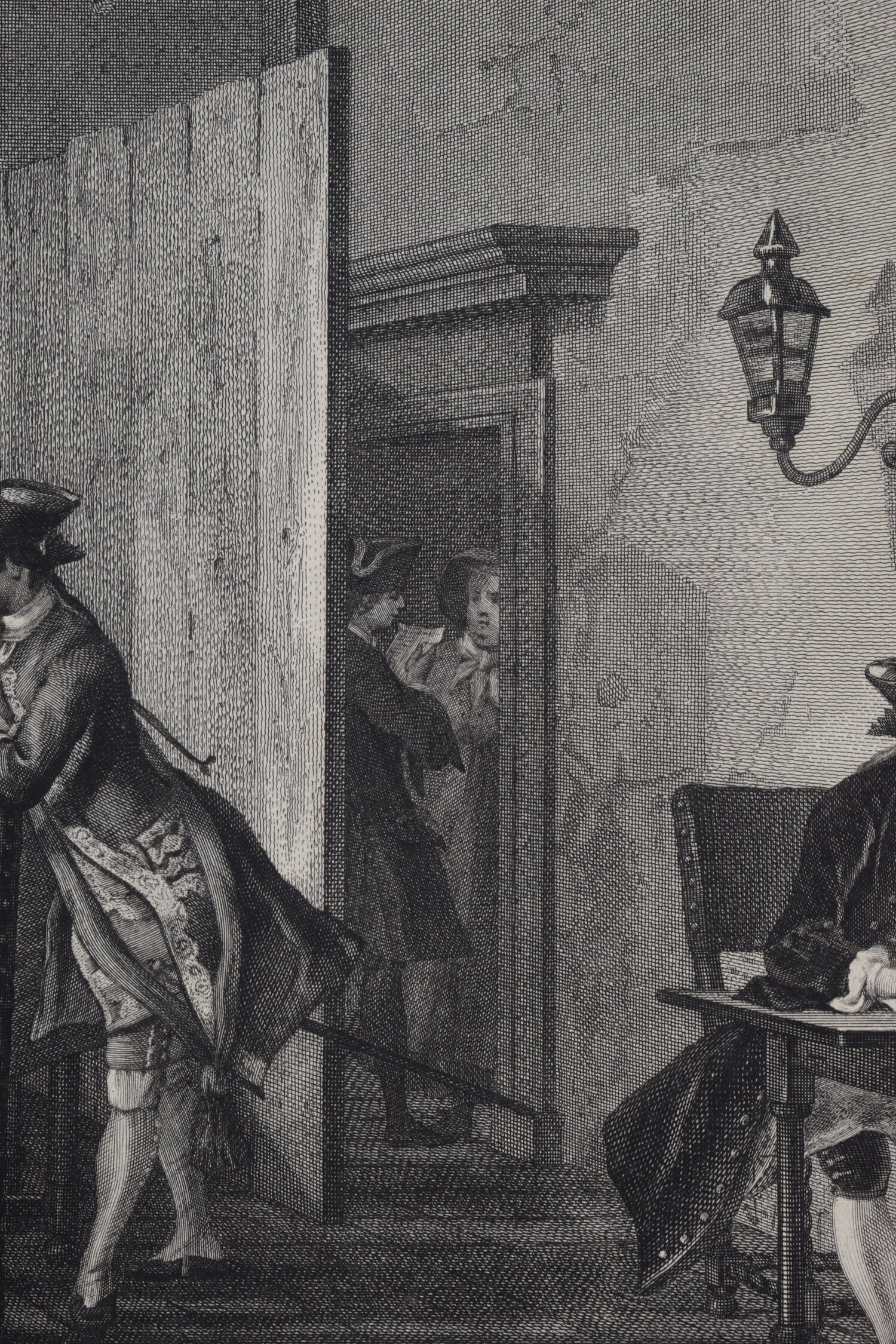
Black Chamber
The question remains how effective such methods were. Were writers able to successfully circumvent the Black Chamber? Coded messages may at first be effective – yet only confirm to spymasters that something sneaky was going on. Using codes was therefore an incentive for officers to continue and expand activities in the Black Chamber.
But to make and read any message, secretive or otherwise, numerous materials were required.
Continue to Room 5 to check out the material letter and letter materials.
But to make and read any message, secretive or otherwise, numerous materials were required.
Continue to Room 5 to check out the material letter and letter materials.
Page added: 12 November 2023
